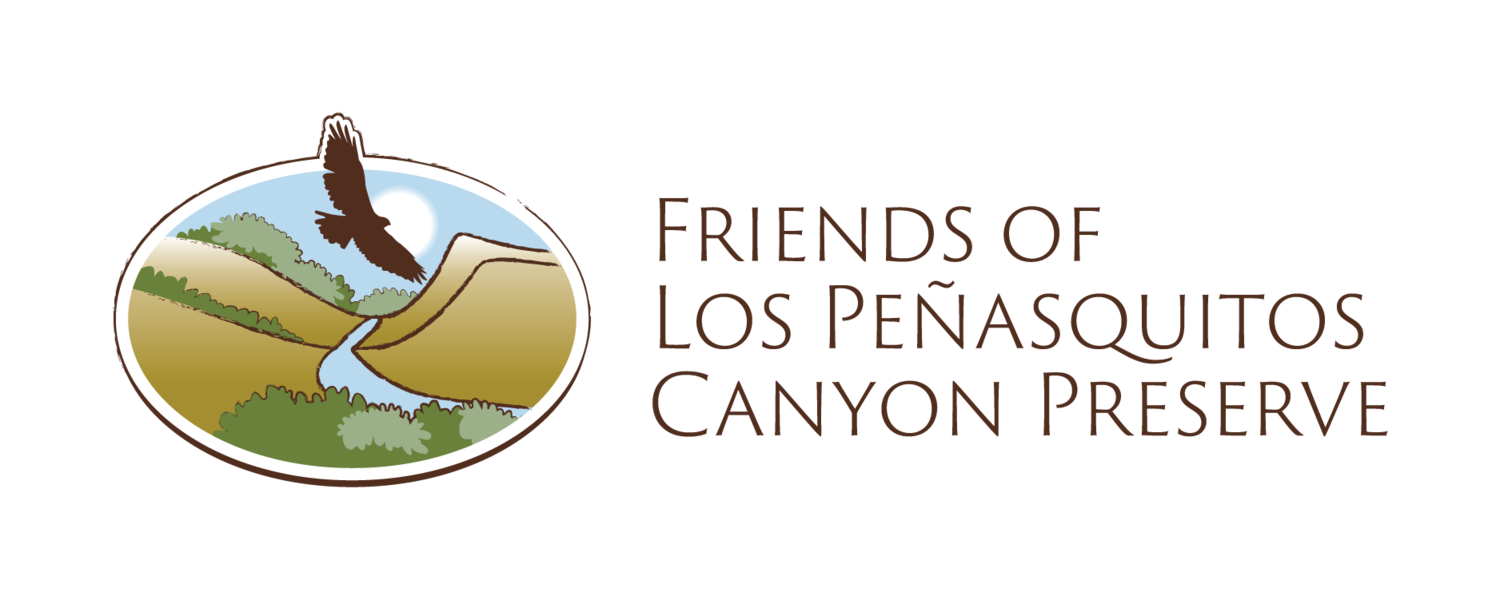Nectar Robbers
by Cindy Pencek, Trail Guide Class of 2024
(reprint from the Mission Trails newsletter)
When I first saw it, I was totally confused. Excited to see a hummingbird visiting big, bright hibiscus flowers and thinking I'd get a photo fit for a calendar. But the bird did something I had never seen before, it went to the base of the flower to drink. It was robbing nectar from the flower!
Let's start with terminology.
In the context of this discussion, we have “legitimate pollinators” who move pollen around from flower to flower which results in the plant making seeds. Then we have "nectar thieves," who visit the flower and take pollen or nectar but lack the size, shape, or behavior to move pollen from flower to flower. And finally "nectar robbers," who specifically drink nectar from a hole in the base of the flower.
Thieving and robbing can have deleterious effects on the plant's reproduction, but overall data regarding the practices are quite complex. Some obvious negative examples would be destructive birds like parakeets or finches who drink nectar from flowers by removing them and dropping them on the ground. Robbers may damage a flower by creating such a large hole or mangling the petal or reproductive structure so that it no longer functions as an ovary and is not able to create seeds. And one can imagine the broader, negative ecological damage that hundreds of non-native western honey bees (Apis mellifera) could have by thieving nectar from something like a Shaw's agave which would dramatically reduce the amount of nectar that the legitimate pollinator such as a long-tongued bat has available. These bats may fly a great distance in hopes of a substantial meal.
Insects are frequently nectar robbers. Insect species that make the hole in the base of the flower are called primary robbers. Once the hole is made, often a number of secondary robbers can come along and take advantage. Robbing behavior can be learned from individual to individual and species to species. Most studies on nectar robbing show the plant sets less seed if robbing has occurred. Maloof summarizes studies on the practice of nectar robbing, and discusses a few cases where nectar robbing was advantageous to the plant. Consider a large Arroyo Lupine (Lupinus succulentus) which may have multiple flower stalks and upwards of 100 flowers. In cases where nectar robbing has not occurred, one individual bee might spend most of its time on the same plant resulting in self- pollination of the flowers. Data shows if robbing has occurred and less nectar is present, the bees may fly further from plant to plant and thus avoid self- pollinating (plants benefit from pollination by other individual plants). Data also shows that in some cases the robbers do actually pollinate the flowers. Short tongued bees may be more prone to nectar robbing, but many bee species are opportunists and will use holes if they're there, in addition to legitimately pollinating blossoms without holes.
Examples of plants with evidence of nectar robbing by bees in San Diego County include Deerweed (Acmispon glaber) and Manzanita (Arctostaphylos spp.). Deerweed sometimes has holes and sometimes is missing whole parts of the flower; Lasioglossum bees and Parancistrocerus wasps have been seen visiting deerweed. Manzanita flowers are sturdier and have a distinct hole but otherwise appear undamaged. These robbers have been seen around the area, and certainly occur in MTRP, but we don't have metadata to identify observations from MTRP specifically. Let's change that!
If you see evidence of nectar robbing in MTRP, please add the following "Observation Fields" to iNat observations so we can track this behavior:
- For birds, use: Nectar robbing? And select "Yes" for "Is the bird piercing the bottom of a flower, or otherwise "stealing" nectar without accessing the pollen?"
- For insects, use: Robbing Nectar. And select "Yes" for "Record as yes if insect is feeding from the corolla base from a hole cut into the floral tube."
Source:
Maloof, Joan E. and Inouye, David W. “Are nectar robbers cheaters or mutualists?" Ecology (Oct 2000): p. 2651-2661. Ecological Society of America. https://faculty.salisbury.edu/ ~jemaloof/manuscripts/Ecology.htm




